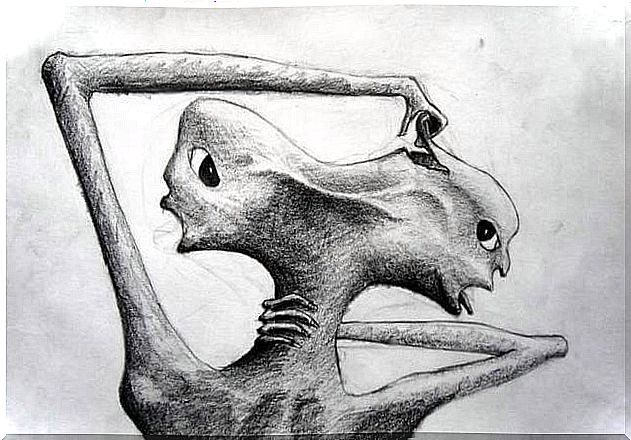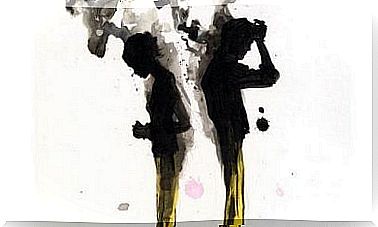Psychosis: What Is It, What Causes It And How Is It Treated?

We can define psychosis as broadly as: ” a mental disorder in which the mental function is sufficiently impaired and severely disrupts the patient’s capacity to meet normal demands on life.” (KMLE Medical Dictionary).
If you look at this definition, you may be thinking of a specific disorder that may be leading to psychosis or psychotic symptoms. These range from schizophrenia, schizotypal personality disorder, psychotic disorders caused by medications or narcotics, and psychotic disorders with other medical explanations.
What is psychosis?
Disorders within the spectrum of schizophrenia and other psychotic disorders are defined by digression in one or more of the following areas: delusions, hallucinations, thought disorders (speech), disturbed or abnormal motor function (including catatonia) and negative symptoms. This is according to “DSM-V”. Now, let’s look at the characteristics of these symptoms of psychosis.
Delusions
Delusions are a form of unchanging perceptions, where even the most logical counter-arguments are useless. They vary greatly in topics (they can be religious, ideas of greatness, etc).
Even if it is to oversimplify, we can call it something like “fictional stories” sick people have, even if they do not know that they are fictional. Therefore, the person will express what he or she thinks is real and act in relation to it, even if it does not fit with reality.
We consider delusions to be eccentric if they are clearly unrealistic, incomprehensible and do not come from past life experiences.
- An example of an eccentric delusion is the belief that an extraterrestrial force has taken a person’s internal organs and replaced them with others without leaving wounds or scars.
- An example of a non-eccentric delusion is a person who believes that it is being monitored by the police, even without any clear evidence.

Hallucinations
Hallucinations are sensory experiences that come without any external form of influence. They are alive and clear, with all the strength and influence of normal perceptions. But they cannot be voluntarily controlled. They can appear with any of our senses, but auditory hallucinations are the most common with schizophrenia and other similar disorders.
According to “DSM-V”, auditory hallucinations are most often experienced in the form of voices, known or unknown, and are perceived as outside a person’s own thoughts. There may also be tactile hallucinations, olfactory hallucinations and visual hallucinations.
Thought disorders (speech)
Confused thinking (thought disorder) is usually detected through a person’s speech or way of speaking. It is very difficult to have a conversation with a psychotic person. They can change the theme suddenly. They can answer questions we have never asked. And their speech can be so confusing that it is virtually impossible to understand what they are saying.
Severely disturbed or abnormal motor function (including catatonia)
Severely disturbed or abnormal motor function can manifest in various ways, from childish “stupidity” to unpredictable agitation. A person may have difficulty performing a particular task or reaching a particular goal. In other words, they may have difficulty doing everyday things.
Catatonic behavior occurs as a marked reduction in a person’s reactivity to their environment. It looks like:
- Resistance to following instructions
- A rigid, inappropriate or eccentric attitude
- Total absence of verbal or motor responses
Other features are:
- Stereotype, repetitive movements
- To stare
- Grimaces
- No speech
- Continuous repetition of words
Negative symptoms
Two particularly prominent negative symptoms of schizophrenia are decreased emotional expression and apathy. First and foremost, reduced emotional expression consists of a reduction in a person’s facial expression, eye contact, tone of voice, and movement of hands, head, and face that usually accompanies our speech.
In addition, apathy is a reduction of activities either controlled by personal initiative or for a special reason. The person may remain seated for long periods or show little interest in participating in work or social activities.

What causes psychosis?
This is a difficult question to answer because it is not just one cause. There is a great variety of factors that cause psychosis. Therefore, we will answer the question by looking at the different types of disorders that psychosis can cause.
Schizophrenia
Genetic factors play an important role in a person’s risk of developing schizophrenia. This is a fact, although most people who are diagnosed with schizophrenia do not have a family history of psychosis.
Complications of pregnancy and childbirth are associated with hypoxia (lack of oxygen) and older age is also associated with a greater likelihood of schizophrenia.
Seasons with many births have also been associated with a higher incidence of schizophrenia. For example, in some places it is the end of winter / beginning of spring. The incidence of schizophrenia and related diseases is also higher in children who have grown up in an urban environment and in some ethnic minorities.
Schizoaffective disorder
This disorder is defined as an uninterrupted period of illness including a severe episode of an emotional state (mania or severe depression), as well as delusions, hallucinations, speech disorders, very disruptive behavior or negative symptoms.
There may be a greater chance of suffering from schizoaffective disorder for families in close contact with people who have schizophrenia, bipolar disorder or schizoaffective disorder.
Short-term psychotic disorder
The risk factors for this disorder are composed of previous personality disorders and characteristics such as Schizotypal personality disorder, borderline personality disorder, or specific traits such as suspicion. Short-term psychotic disorder tends to come after a stressful event. However, this does not mean that all stressful experiences will lead to psychotic disorders.
Other psychotic disorders
In general, we can say that psychosis will not develop in a person without the necessary “certificates”. The biggest risk factor is biological. The trigger tends to be a very stressful situation in a person’s life, or the use of certain drugs.
Although not all psychotic episodes are due to drug use, it increases the risk. Certain drugs, such as Cannabis, can lead to a psychotic episode. People who have already had an episode are particularly sensitive to the effects of drugs. This is especially true if the previous episode was related to drug use.
A lot of research is being done on the possible causes. We are not sure of the exact mechanisms that cause these symptoms to occur and develop. That said, the stress-vulnerability model is the most widely accepted conclusion of recent research.
According to this model, a person with psychotic symptoms is more vulnerable to the disorder than other people. This may be due to biological factors or events in their lives.

Treatment of psychosis
The treatment plan for psychotic disorders must be interdisciplinary and well coordinated, since the therapy is normally performed by several professionals. The recommendations for an appropriate therapeutic plan are:
- First, evaluate and diagnose the symptoms.
- Then, develop a treatment plan. The preferred method of treatment is medical, but this can also be supported by psychological therapy, which has a greater effect on negative symptoms, psychosocial function and especially a person’s quality of life.
- To find a suitable doctor / psychologist and patient relationship, where the professionals take an active interest in the treatment.
- Training in the disease for the patient and their family members.
- Treatment of other comorbidities.
- Therapy for the patient’s social function.
- Coordination of the patient’s various treatments.
- Information about the treatment that is given.
Medical treatment
Medication is always the preferred method of treating psychotic patients. However, this treatment is most active when combined with psychological therapy.
Medications prescribed to these patients are antipsychotics also called neuroleptics. In addition, anxiolytic drugs and antidepressants are usually prescribed, with the goal of treating anxiety or depressive symptoms.

Psychological treatment
Psychoeducational family therapy
Family therapy is fundamental, as the family must understand the symptoms so they can cope with them in a good way. Some goals for the training are to:
- Give a good explanation of the disorder
- Relieve the burden on the family
- Encourage a warm family atmosphere
- Improve communication
Training in social skills
Most people with psychosis have a lack of social skills, which contributes to relapse and worsening of symptoms, on top of a very low level of social function. For example, a therapist will work with:
- Yesterday
- Verbal flow
- Tone and rhythm in the language
- Attitude
- Expression
- To express oneself emotionally and socially
“Integrated Psychological Therapy” (IPT) by Roder and Brenner (2007)
IPT is a behavioral training program for schizophrenia. It is group-based (5-7 patients) and takes place three times a week, for at least three months. There are 5 modules. They include cognitive rehabilitation (cognitive differentiation, social perception and verbal communication). In addition, it includes social skills training (training in social skills and interpersonal relationships).
To conclude, treatments for psychotic disorders are usually medical with supportive psychological therapy, to increase effectiveness. Medical treatment is very important because it helps with symptoms and restores a person’s balance. To put it simply, medicine will promote conditions that help psychological therapy to work.
Bibliography
American Psychiatry Association. Diagnostic and Statistical Manual of Mental Disorders (DSM-5), 5th Ed. Arlington, VA: American Psychiatric Association, 2013.








